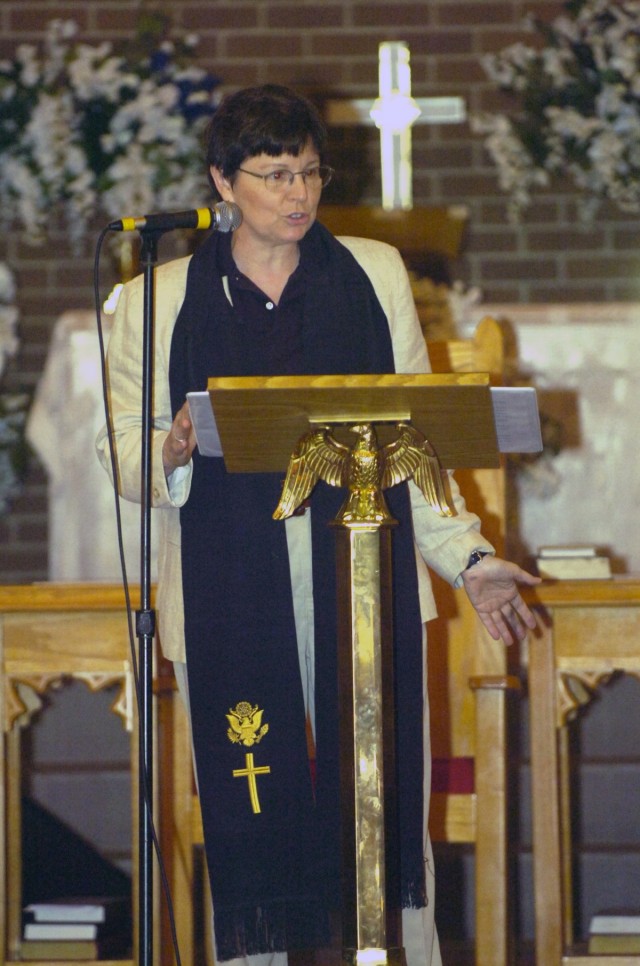FORT HOOD, Texas- "Unit Ministry Team, going where the Soldiers go, to bring them a word and outstretched hand, worship, hope and help wherever we can."
These lyrics written and performed by III Corps Chaplain, Col. Michael T. Lembke, a native of Crawfordsville Ind., during a service of remembrance for the Army Chaplains Corps July 25 at Fort Hood's Comanche Chapel, are reminders of the service chaplains have been giving Soldiers since their inception 233 years ago.
"This [anniversary] is a testimony to the Army Family," said Lembke. "It's a chance for us to reflect on where we have been, and to commit to where we are going."
Established July 29, 1775, the first chaplains were preachers or pastors, who would travel with the Soldiers from local units and take care of them as they marched into battle. This has remained basically the same throughout the chaplain's history, except now chaplains and Soldiers come from all different walks of life and religious backgrounds.
"There is such a great diversity of our Soldiers. The difference now is I don't just provide support specific to my denomination, it is also my job to find a way for Soldiers from different religious faiths to practice their religion as well," said 1st Cavalry Division Chaplain, Lt. Col. Barbara Sherer.
"We have been here from the beginning through all our major conflicts, and chaplains have been assigned to individual units, from the revolutionary times, Civil War, World War I, and World War II," Lembke added.
However, as much change as the Army has seen over the past 233 years, the Chaplains Corps has stayed their original course.
"Even though there is a lot of technology in the force right now the one thing that hasn't changed about chaplains is we get at the human dimension, the spiritual dimension," Lembke said. "Today more than ever, it is important for all the elements of a Soldier's being to be addressed. The physical, mental, emotional, and spiritual aspects of life; chaplains connect Soldiers to that."
To commemorate over two centuries of service to the Army family, chaplains, chaplain assistants, and their families from numerous units from around Fort Hood gathered for a day of fellowship and reflection.
Their day started with a chaplain run at Killeen Park, which was followed by a remembrance ceremony and fellowship reception at Comanche Chapel.
Commanders, command sergeant majors, and many others came out to show their appreciation for the years of prayer, and counseling the chaplain corps has offered.
"We have a great history, a great legacy that we will carry on into the future. When we face adversity, we need to be reminded we're not alone to face those difficulties," said Sherer. "No matter where [a Soldier] goes, no matter how far away from home they go, they are not alone. It's really nice to see that we are not the only ones who feel that what we do is of the utmost importance."




Social Sharing